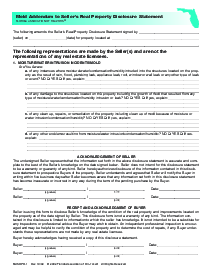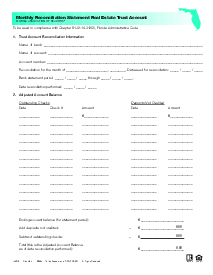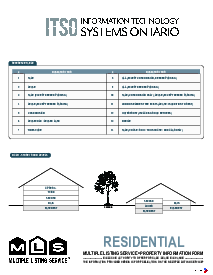-
Templates
1099 FormsAccurately report 1099 information returns and ensure IRS filing with easeExplore all templatesW-9 W-8 FormsEasily manage and share taxpayer details to streamline payments and meet IRS requirements with confidenceExplore all templatesOther Tax FormsFillable tax forms simplify and speed up your tax filing process and aid with recordkeeping.Explore all templatesReal EstateReal estate templates for all cases, from sale to rentals, save you a lot of time and effort.Explore all templatesLogisticsSimplify your trucking and logistics paperwork with our ready-to-use transportation and freight templates.Explore all templatesMedicalMedical forms help you keep patient documentation organized and secure.Explore all templatesBill of SaleBill of Sale templates streamline the transfer of ownership with clarity and protection.Explore all templatesContractsVarious contract templates ensure efficient and clear legal transactions.Explore all templatesEducationEducational forms and templates enhance the learning experience and student management.Explore all templates
-
Features
FeaturesAI-Enhanced Document Solutions for Contractor-Client Success and IRS ComplianceExplore all featuresAI Summarizer Check out the featureAI PDF summarizer makes your document workflow even faster. Ask AI to summarize PDF, assist you with tax forms, complete assignments, and more using just one tool.Sign PDF Check out the featurePDFLiner gives the opportunity to sign documents online, save them, send at once by email or print. Register now, upload your document and e-sign it onlineFill Out PDF Check out the featurePDFLiner provides different tools for filling in PDF forms. All you need is to register, upload the necessary document and start filling it out.Draw on a PDF Check out the featureDraw lines, circles, and other drawings on PDF using tools of PDFLiner online. Streamline your document editing process, speeding up your productivity
- Solutions
- Features
- Blog
- Support
- Pricing
- Log in
- Sign Up
Form RF 201 Tennessee Residential Property Condition Disclosure
Get your Form RF 201 Tennessee Residential Property Condition Disclosure in 3 easy steps
-
01 Fill and edit template
-
02 Sign it online
-
03 Export or print immediately
What Is a Tennessee Residential Property Condition Disclosure Form?
In the simplest terms, the Tennessee Residential Property Property Condition Disclosure Form RF 201 is a document that house sellers must fill out, revealing crucial details about their property to potential buyers. It provides them with a significant understanding of the condition of the residential property they are considering purchasing. This forms an essential part of the real estate transaction process in Tennessee, promoting transparency and honesty between parties involved.
Importance of the RF 201 disclosure form
The form is more than just a traditional document; it retains legal importance. Disclosure of potential issues, from foundational cracks and leakage problems, to heating system issues, can greatly influence a potential buyer's decision. If the seller neglects certain information, it can be a ground for legal issues in the future. Therefore, it’s crucial for the seller to diligently complete the RF 201 Disclosure Form to provide an honest account of the property status.
How to Fill Out the Tennessee Residential Property Condition Disclosure
Although the process seems complex, with the right guidance, it can be straightforward. Here is the break of how to fill out this form to make it easier for both experienced and new homeowners.
- Initiate the process by entering the seller's name in the allocated line titled 'Seller'.
- Proceed to the 'Property Address' section. Fill in details of the house's location, such as the lot number, city, county, and state. Please ensure that the zip code is correctly inputted.
- The 'Transfer' section requires information about the property's transfer date. Put in the relevant date here.
- In the 'Type of Property' section, describe your property comprehensively; single-family, multi-family, manufactured home, etc.
- 'Age of Property' ought to be filled with the number of years since the property acquisition.
- 'Occupancy' section. Indicate whether the property is currently occupied, vacant, or other and explain in 'Explanation' if necessary.
- Move to the 'Systems and Fixtures' section. You will see a list of different items i.e., plumbing, central heating, air conditioning, etc. For every item mentioned, check the 'Yes', 'No', or 'No Representation' box depending on the availability or condition of the item in the property. Provide explanations where necessary.
- Fill the 'Structural items, including roof and gutters' and 'Plumbing' sections similarly to previous step.
- Covered also are 'Heating and Cooling Systems', 'Electrical System', 'Other Equipment and Appliances', 'Soils, Drainage, and Boundaries', 'Wood-Destroying Insects, Dry Rot, and Pests' and 'Other Matters'. Fill out these sections, checking 'Yes', 'No' or 'No Representation' as applicable and providing explanations as required.
- Fill in the 'Additional Explanations' section if there any matters not covered in the pre-filled items that you should inform the prospective buyer about.
- Go to the 'Disclaimer by Seller and Release by Buyer' part. Provide the date and write your full name at the 'Seller Signature' box. Moreover, if there's a business entity involved, provide business name, the title of an authorized person, and their signature.
- Finally, head over to the 'Acknowledgement' section. Leave this area blank for the buyer and transferee to fill. They should add their name and the date and affix their signature when they agree to the contents of the report.
Remember to review all the details before saving and printing the form. It is essential to ensure that all details are correct, verifiable, and honestly represented.
When to use RF 201 disclosure template
The highest demand for the RF 201 form, commonly referred to as the Tennessee residential property condition disclosure form, comes when you're planning to sell your residential property in Tennessee. It is legally required and provides full disclosure about the current property condition from the seller to the buyer. A few scenarios where this form comes to play include:
- Initial listing: You should fill out this form when you first list your residential property for sale. This allows prospective buyers to have a comprehensive understanding of what they are considering for purchase.
- Post home inspection: If a home inspection brings new issues to light, an updated disclosure form should be provided. This ensures that the buyer is aware of all issues before the closing.
- Before finalizing the sale: Another common time to use this form is immediately before completing the real estate transaction. At this point, the form serves as a final confirmation of the property’s condition and other disclosures.
Fillable online Form RF 201 Tennessee Residential Property Condition Disclosure


































































